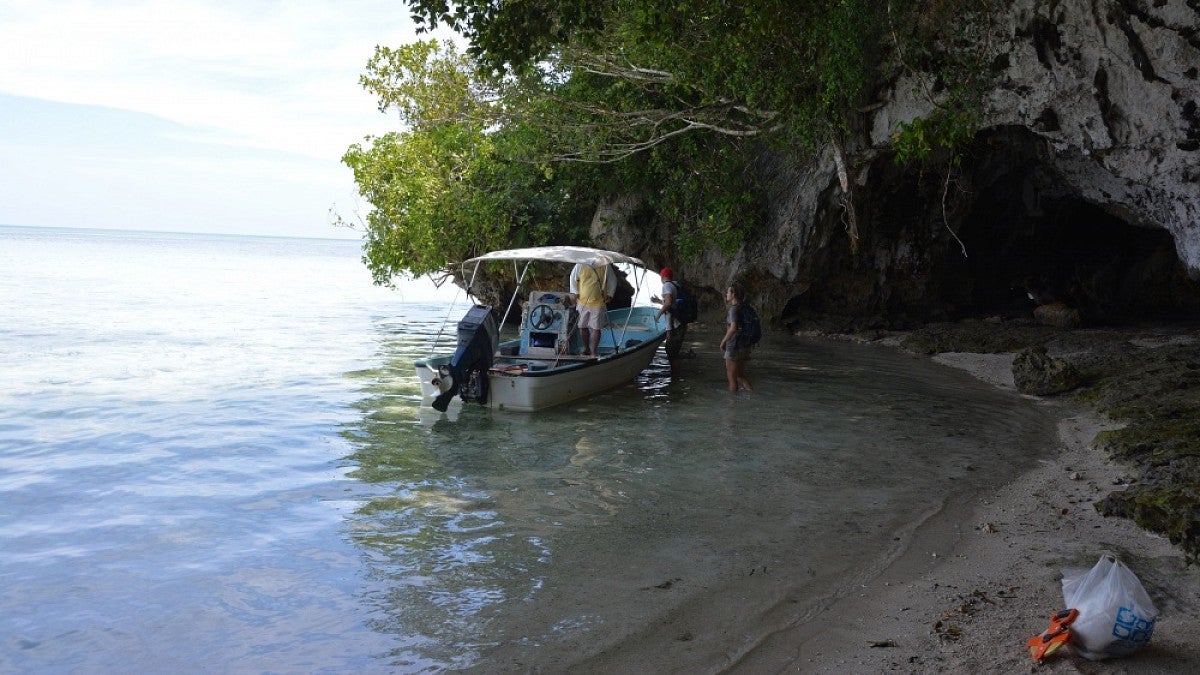A recent study at a Micronesian burial site may finally put a decade-long controversy to rest.
Published last week in the international journal Antiquity, the University of Oregon study provides new evidence concerning the earliest peoples of Palau and disproves claims of an ancient “dwarf” population inhabiting the archipelago. Palau is an island nation in the western Pacific Ocean.

Berger, a professor at the University of the Witwatersrand in South Africa, also argued that the Palau remains exhibited skeletal traits associated with more primitive species of the genus Homo. Based on Berger’s descriptions, the remains came to be called “hobbits” in media reports on the research, in a nod to the fictional people in novels by British author J.R.R. Tolkien.
Berger’s conclusions made international headlines but also drew sharp criticism from archaeologists, particularly those specializing in the study of island peoples.
Fitzpatrick has been among Berger’s most vocal critics. Associate director at the Museum of Natural and Cultural History and founding co-editor of the Journal of Island and Coastal Archaeology, Fitzpatrick published a 2008 rejoinder to Berger’s study, pointing to several flaws including inadequate sample size and a lack of needed comparisons with skeletal remains from elsewhere in the region.
“What we really needed, though, was additional archaeological evidence,” Fitzpatrick said. “So in 2015 we set out to do a controlled excavation that mimicked the size and placement of Berger’s study.”
Revisiting the Ucheliungs cave site — one of the two Palau locations Berger studied — the UO team uncovered evidence that casts grave doubt on the insular dwarfism question, including artifacts and food remains that Berger claimed were absent from the site.
“Island dwarfism results from a variety of factors including isolation from other populations and limited food resources,” Fitzpatrick said. “But our excavation at Ucheliungs yielded pottery artifacts typical throughout the Rock Islands, which strongly suggests interaction among these many communities. We also found the remains of diverse and abundant marine animals which would have been exploited as a rich food resource. In effect, then, we have the inverse conditions needed to cause the dwarfism that Berger asserts.”
Moreover, among the 200 mineralized human bone fragments uncovered during their excavation, the authors found no pathological patterns indicating dwarfism and no evidence of small body size.
“In terms of size and incidence of pathology, the bones fall definitively within the range of what we see elsewhere in Palau,” said Fitzpatrick. “Essentially, there is nothing unusual about them, contrary to what Berger and his colleagues asserted.”
“The claim of insular dwarfism at the site has been disproven before, but it’s still being cited,” said Stone, the Antiquity study’s lead author. “Hopefully this helps to set the record straight.”
—By Kristin Strommer, Museum of Natural and Cultural History


